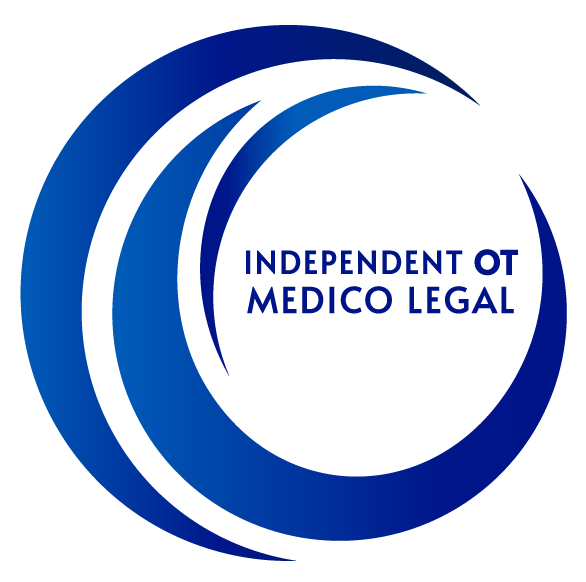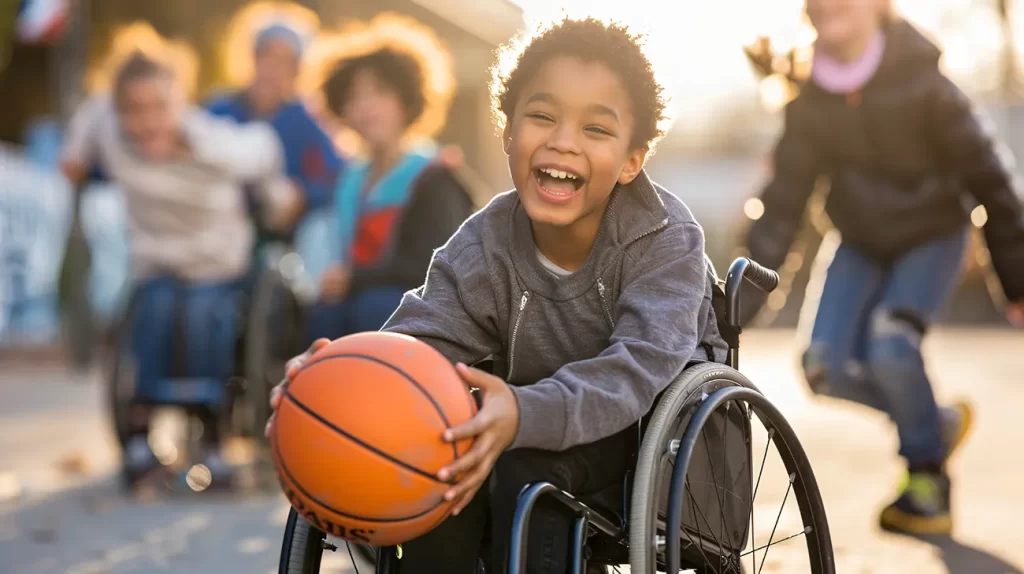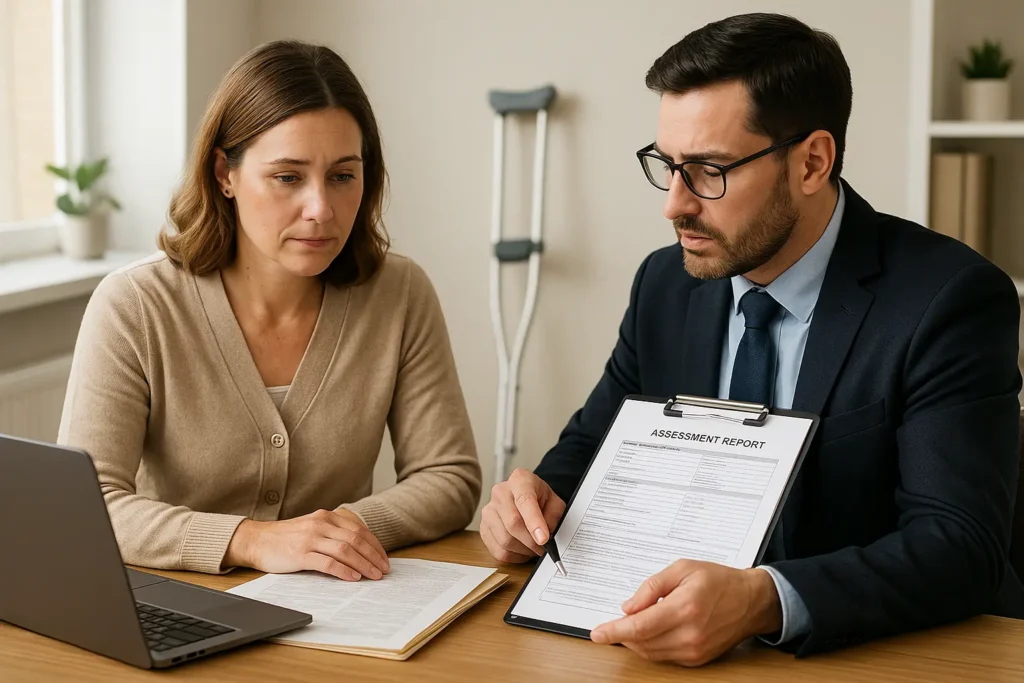Birth injuries can have lifelong impacts on children and families, creating significant physical, emotional and financial challenges. When seeking compensation through a birth injury claim, occupational therapy assessments provide crucial evidence that helps establish the extent of injury and quantify future care needs. Occupational therapy medico legal reports document functional limitations in daily activities related to the birth injury, and provide detailed recommendations for essential equipment, therapy services and home modifications required as a result of the impairment following a birth injury.
We regularly see how these comprehensive evaluations strengthen birth injury claims by providing objective measurements of developmental delays and functional impairments. Our assessments examine a child’s ability to perform age-appropriate activities, from self-care routines to school participation and social engagement. Our detailed reports then translate the clinical findings into practical implications that courts and insurance companies can clearly understand.
Our occupational therapy reports also project long-term care needs throughout a child’s lifetime, which is essential for calculating appropriate compensation. We document the specific supports required at different developmental stages, as well as any specialised equipment, therapy services and ongoing care required as a result of the birth injury so that these costs can be considered when awarding fair compensation.
Role Of Occupational Therapy Assessments In Birth Injury Claims
Occupational therapy assessments provide crucial evidence in birth injury claims by objectively documenting functional limitations and care needs resulting from birth-related trauma.
Establishing The Impact Of Birth Injuries
Occupational therapists utilise standardised assessments to measure a child’s functional capabilities across developmental domains. These assessments help to quantify delays in fine motor, gross motor, and sensory processing skills.
Our assessments document how birth injuries affect daily activities including self-care, play, and learning. We assess adaptive equipment needs and home modifications required to support the child’s independence and engagement is daily activity. These evaluations determine both immediate and long-term requirements as the child grows into adulthood.
The assessment process includes detailed observation of the child in various environments, as well as intensive interview of the child’s caregivers, in order to thoroughly understand how the injury impacts function across different contexts. This comprehensive approach ensures all functional limitations are captured.
Considering Maternal Birth Injuries
While the primary focus of many birth injury claims is on the child, occupational therapy assessments also play a vital role in evaluating the functional impact of injuries sustained by the mother during pregnancy, labour or delivery. These may include pelvic floor dysfunction, chronic pain, or psychological injury.
Our assessments examine how these injuries affect the mother’s daily life and ability to work or care for her child. We consider pre-existing conditions and determine whether birth trauma has introduced new limitations or exacerbated existing ones. Whilst we cannot diagnose the injury, we discuss the impact of the injury on functional ability. This ensures that claims accurately reflect the true extent of the functional and financial impact of maternal birth injuries.
Linking Assessment Findings To Legal Requirements
Our reports clearly translate assessment results and clinical observations into functional limitations for the injured person, and presents these findings in a language that aligns with legal frameworks for disability and injury claims.
We quantify and cost care and equipment requirements in measurable terms:
- Hours of assistance needed for daily activities
- Frequency of therapy required for optimal outcomes
- Assistive equipment and home modifications
Assessment findings establish causation by comparing the child’s current function to expected developmental milestones. This helps legal teams demonstrate the direct impact of the birth injury.
Where a medical practitioner has provided a long-term prognosis, we will discuss how this translates to future needs, which is critical for calculating lifetime care costs. Our projections consider how the child’s needs will evolve throughout different life stages.
Supporting The Claims Process With Professional Evidence
Our reports serve as expert evidence, providing impartial, fact-based documentation of the child’s functional status. We maintain objectivity whilst thoroughly documenting all relevant limitations.
We explain complex functional impacts in clear, accessible language to assist the court and other non-medical professionals understand the significance of the injury.We often liaise with a child’s treating health professionals to create a comprehensive picture of the child’s current and ongoing therapy needs. This multidisciplinary approach strengthens the credibility of the assessment findings.
Evidence from our assessments helps families secure appropriate compensation for therapy services, equipment, and support that maximises the child’s potential for participation in all domains of life including self-care, work and leisure.
Documentation And Reporting For Birth Injury Claims
Occupational therapy assessment reports must capture detailed functional analyses with clinical precision. We include standardised assessment results, developmental milestone comparisons, and objective observations of the child’s capabilities.
When preparing reports, we include:
- Baseline functioning compared to age-appropriate norms
- Specific activity limitations with measurable parameters
- Environmental factors affecting participation
- Adaptive equipment requirements
- Current and projected therapy needs
Each assessment finding links directly to how the injury restricts the child’s participation in typical childhood occupations. This creates a robust functional profile that supports legal arguments for compensation.
Presenting Evidence For Compensation
When presenting occupational therapy evidence in legal proceedings, we focus on translating clinical findings into terms that demonstrate economic impact and life-care costs.
Our birth injury medico legal reports quantify future support needs including:
| Care Category | Assessment Components | Documentation Format |
| Equipment | Current and future assistive equipment and technology | Itemised lists with costs |
| Therapy | Frequency, duration, and type | Total hours per therapy discipline, and whether required on an ongoing or once-off basis |
| Home Modifications | Accessibility requirements | Approximate costs per modification |
Our recommendations also include detailed cost estimates for each piece of equipment, including initial purchase and replacement timelines as the child grows. For example, specialised mobility devices, bathroom aids, or adaptive seating are costed with consideration of lifespan and future upgrades. This level of detail supports accurate financial planning and strengthens compensation claims by reflecting realistic, long-term care costs.
We use precise language that clearly establishes causation between the birth injury and functional limitations. This strengthens the case by showing direct links between negligence and resulting disability.
Our evidence includes photographic documentation where appropriate. These visual records powerfully illustrate functional limitations in a way that text alone cannot convey.
Benefits And Limitations Of Occupational Therapy In Legal Contexts
Occupational therapy assessments provide critical support in birth injury claims by offering objective evidence of the functional impacts of a birth injury.
Enhancing Validity Of Birth Injury Claims
These reports offer courts objective data rather than subjective observations alone.
Our assessments establish clear links between medical diagnoses and functional limitations, helping to determine fair compensation. This evidence supports claims for:
- Specialised equipment needs
- Home modifications
- Ongoing therapy requirements
- Educational support services
- Future care costs
The longitudinal nature of our evaluations reveals how injuries affect development over time, which is particularly valuable in birth injury cases where impacts may evolve as children grow.
Need a Birth Injury Medico Legal Report? Here’s How We Can Help
When pursuing a birth injury claim, having a comprehensive occupational therapy medico legal report is essential for establishing the functional impact of the injury.
Our team at Independent OT Medico Legal works with both plaintiff and defendant law firms across Australia to provide objective, evidence-based evaluations that clearly outline care needs. We pride ourselves on delivering thorough birth injury medico legal reports that accurately document the functional limitations resulting from birth-related complications. Our assessments provide clarity on how these injuries affect daily life and future development.
Why choose our services:
- Balanced representation for both sides of legal proceedings
- Detailed functional assessments focused on real-world impacts
- Evidence-based recommendations for care and support needs
- Clear reporting of current and projected limitations
Timing is critical in birth injury cases. Early assessment helps establish baseline functioning and identifies developmental concerns that may emerge as the child grows.
Our occupational therapists have extensive experience in paediatric development and understand the unique challenges of birth injury cases. We consider both immediate care requirements and long-term support needs in our evaluations.
Reports are typically completed within six weeks of the assessment date, ensuring timely support for legal timelines and claim processing.
Contact our team today to discuss your specific requirements. We can explain our assessment process and provide guidance on the information needed for a comprehensive report that supports your legal requirements.
Read More
Common Mistakes When Requesting a Medico-Legal Report (and How to Avoid Them)




